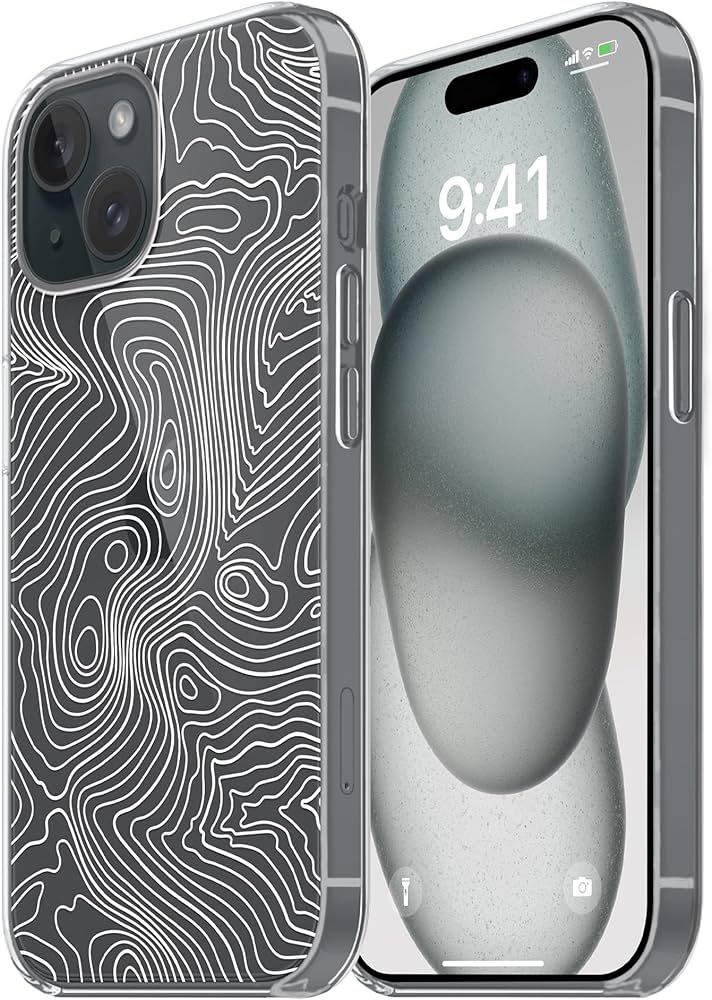In the ever-evolving world of smartphone accessories, one particular trend has gained significant popularity – the topographic phone case. These cases not only serve as a protective shield for your beloved device but also add a touch of adventure and uniqueness with their intricate designs inspired by real-world landscapes. In this article, we will delve into the origins, evolution, and functionality of topographic phone cases, exploring how they have become more than just a stylish accessory.
Origins of Topographic Design:
The term “topographic” refers to the arrangement of natural and artificial physical features of an area, and this concept has found its way into the world of smartphone accessories. The origins of topographic phone cases can be traced back to the growing desire for personalization and individual expression among smartphone users.
Initially, phone cases were predominantly functional, designed solely for protection. However, as technology advanced and smartphones became an integral part of our daily lives, users sought ways to make their devices stand out. This led to the emergence of artistic and visually appealing phone case designs, with topographic patterns becoming a unique and compelling choice.
Evolution of Topographic Phone Cases:
The evolution of topographic phone cases has been marked by a fusion of aesthetics and functionality. What started as simple representations of mountain ranges and landscapes has now transformed into intricate, detailed designs that capture the essence of various terrains. Manufacturers and designers have embraced advanced printing technologies, enabling them to create visually stunning and highly realistic topographic patterns.
One notable aspect of this evolution is the customization options available to users. Many companies now offer personalized topographic phone cases, allowing customers to choose specific locations, colors, and even add custom text. This level of personalization adds a sentimental value to the accessory, making it not just a case but a storytelling element for the user.
Functionality and Material:
Beyond their visual appeal, topographic phone cases are designed with functionality in mind. Manufacturers understand the importance of providing robust protection for smartphones, considering the investment users make in these devices. As a result, these cases are often made from high-quality materials such as polycarbonate, TPU (thermoplastic polyurethane), or a combination of both.
The durability of these materials ensures that the phone remains shielded from scratches, bumps, and accidental drops. Many topographic cases also feature raised edges around the screen and camera, providing an additional layer of protection against potential damage to these sensitive areas.
Moreover, the topographic design itself can serve a functional purpose beyond aesthetics. The raised patterns on the case add texture, improving the grip and preventing the phone from slipping out of hand. This tactile advantage not only enhances the user experience but also contributes to the overall safety of the device.
Adventure and Lifestyle:
The popularity of topographic phone cases goes beyond mere protection and personalization; it reflects a lifestyle and an adventurous spirit. The intricate depictions of mountains, valleys, and other geographical features evoke a sense of exploration and connection to nature. Users who choose these cases often identify with the outdoors, seeking a reminder of the vast and diverse landscapes that exist beyond the confines of their daily lives.
Additionally, topographic phone cases serve as conversation starters. Whether you’re a seasoned adventurer or someone who simply appreciates the beauty of nature, these cases provide an opportunity to share stories and experiences. The designs become a reflection of the user’s passions and interests, sparking connections and camaraderie with like-minded individuals.
Environmental Awareness:
In recent years, there has been a growing awareness of environmental issues, and consumers are increasingly making choices that align with sustainability. Recognizing this trend, some manufacturers of topographic phone cases are incorporating eco-friendly materials into their production processes. These cases not only offer the same level of protection and aesthetic appeal but also contribute to reducing the environmental impact of accessory manufacturing.
Conclusion:
Topographic phone cases have transcended the boundaries of traditional smartphone accessories, evolving into a unique and multifaceted product that combines artistry, functionality, and personalization. The journey from simple landscape representations to highly detailed, customizable designs reflects the dynamic nature of consumer preferences.
As technology continues to advance, it will be intriguing to witness how topographic phone cases further evolve. Whether it’s through more sophisticated printing techniques, additional protective features, or innovative materials, these cases are likely to remain a popular choice among users who seek a perfect blend of style and substance for their smartphones.

